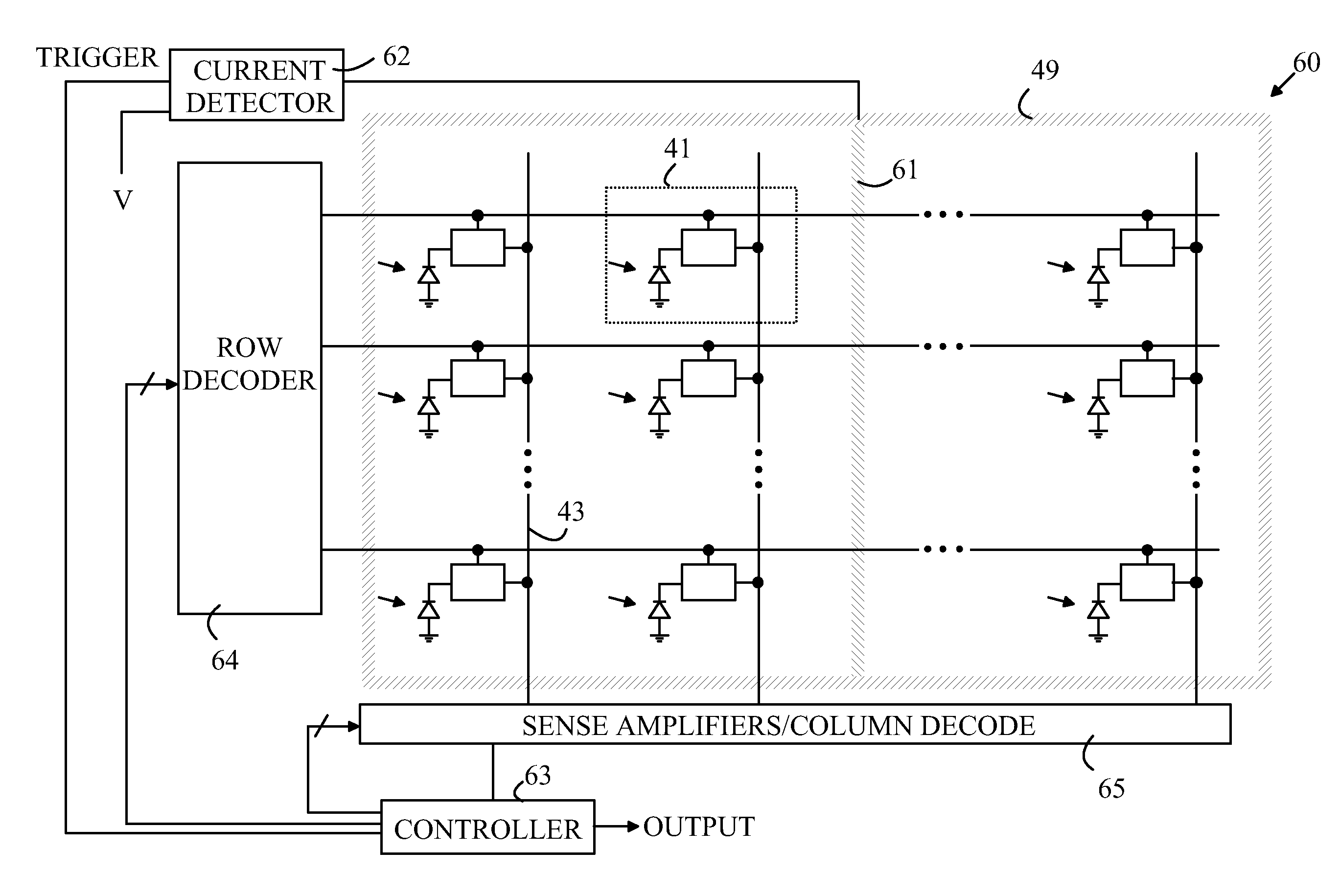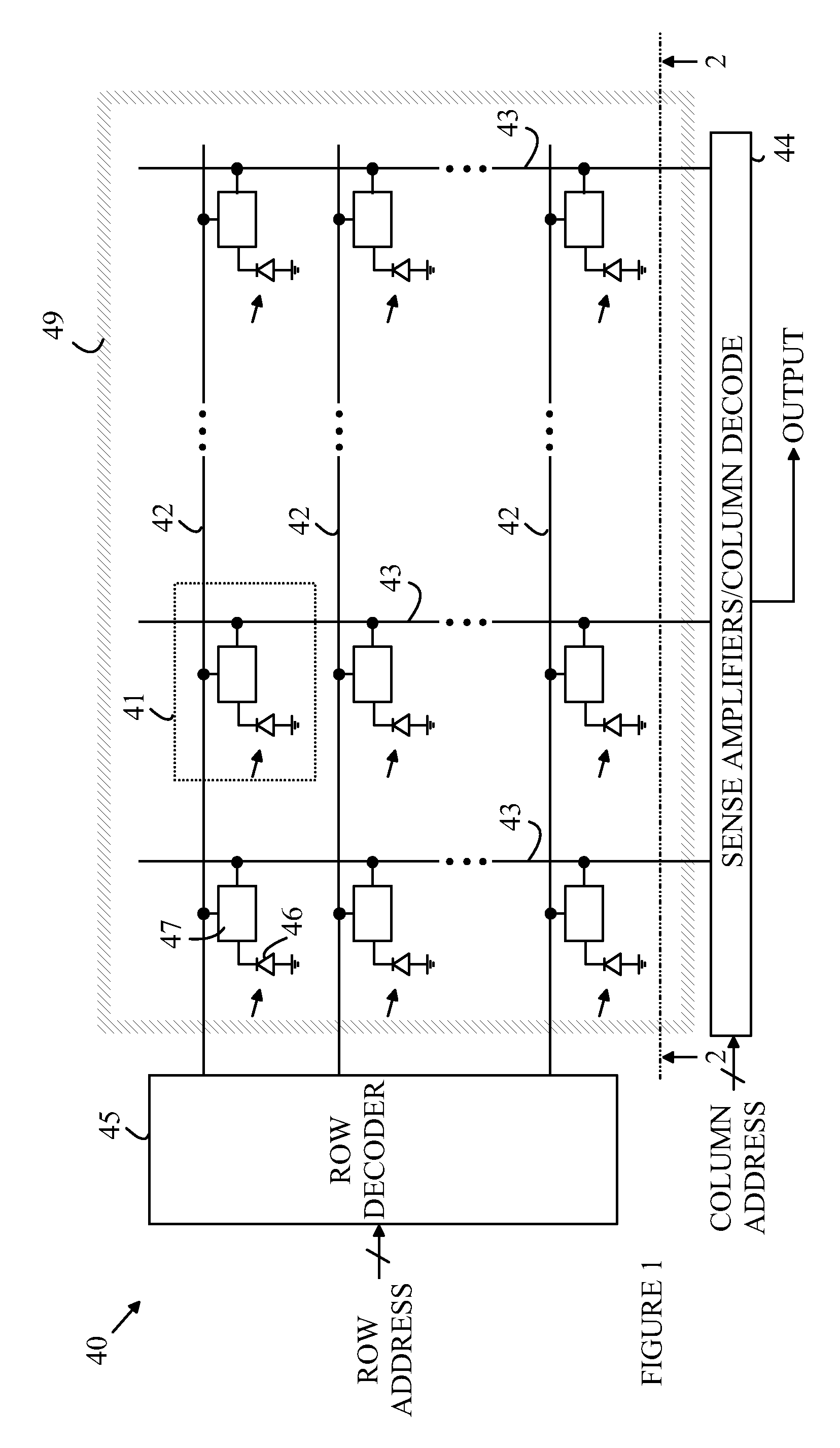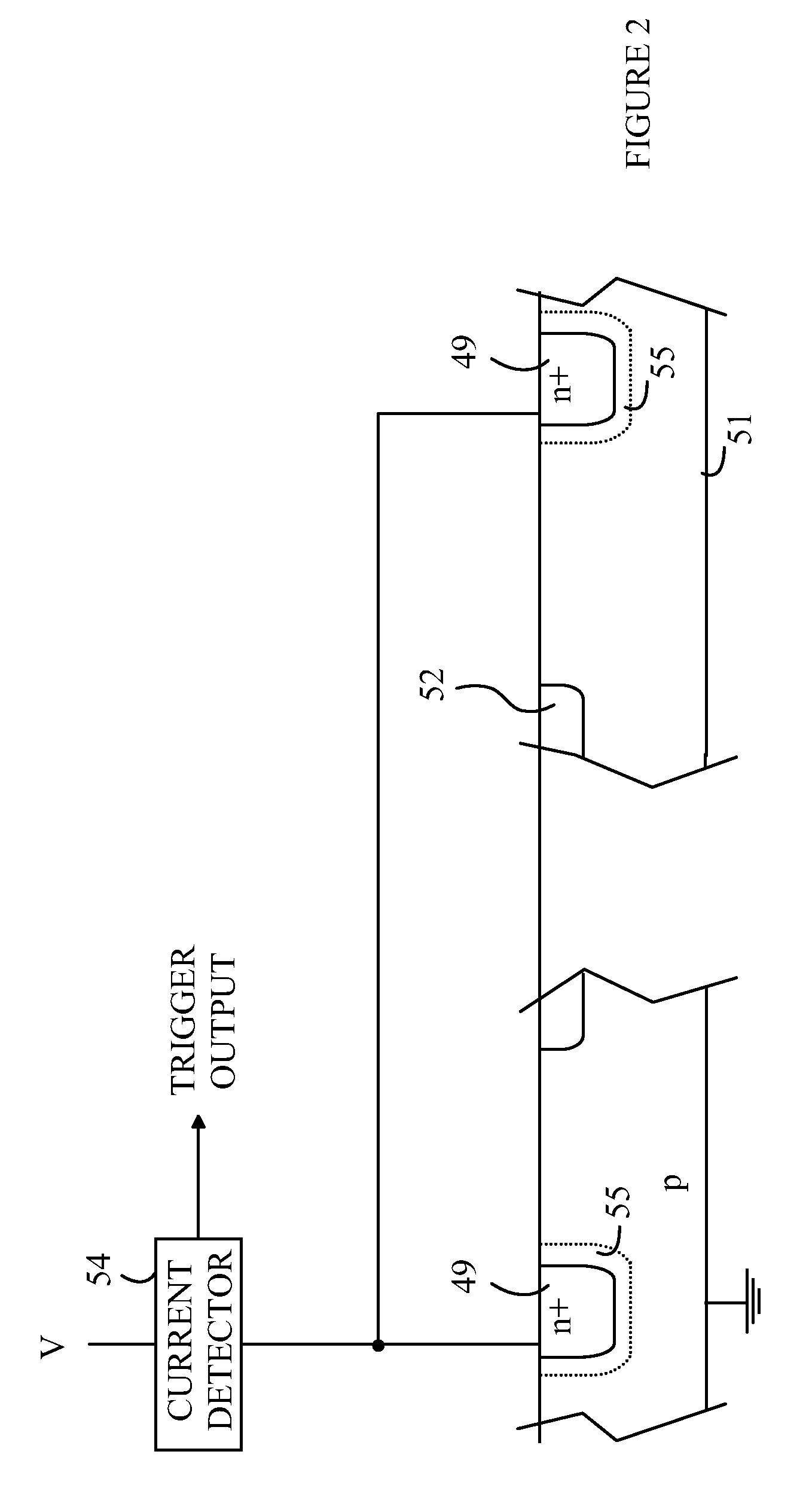Self-triggering CMOS imaging array utilizing guard region structures as light detectors
a technology of cmos imaging array and guard region structure, which is applied in the direction of television system, radioation controlled device, instruments, etc., can solve the problems of inability to synchronize the existing millions of x-ray machines in dental facilities, inability to detect the detection of the patient, and inability to meet the needs of patients
- Summary
- Abstract
- Description
- Claims
- Application Information
AI Technical Summary
Benefits of technology
Problems solved by technology
Method used
Image
Examples
Embodiment Construction
[0014]The manner in which the present invention provides its advantages can be more easily understood with reference to FIGS. 1 and 2, which illustrate a CMOS imaging array according to one embodiment of the present invention. FIG. 1 is a schematic view of the top surface of a die containing imaging array 40, and FIG. 2 is a cross-sectional view through line 2-2 shown in FIG. 1. Imaging array 40 is constructed from a rectangular array of pixel sensors 41. Each pixel sensor includes a photodiode 46 and an interface circuit 47. The details of the interface circuit depend on the particular pixel design. However, all of the pixel sensors include a gate that is connected to a row line 42. The gate is used to connect that pixel sensor to a corresponding bit line 43. In addition, most pixel sensors include a charge to voltage converting circuit that converts the charge stored by the photodiode during the image exposure to a voltage that is readout through the gate. The photodiodes accumula...
PUM
 Login to View More
Login to View More Abstract
Description
Claims
Application Information
 Login to View More
Login to View More - R&D
- Intellectual Property
- Life Sciences
- Materials
- Tech Scout
- Unparalleled Data Quality
- Higher Quality Content
- 60% Fewer Hallucinations
Browse by: Latest US Patents, China's latest patents, Technical Efficacy Thesaurus, Application Domain, Technology Topic, Popular Technical Reports.
© 2025 PatSnap. All rights reserved.Legal|Privacy policy|Modern Slavery Act Transparency Statement|Sitemap|About US| Contact US: help@patsnap.com



